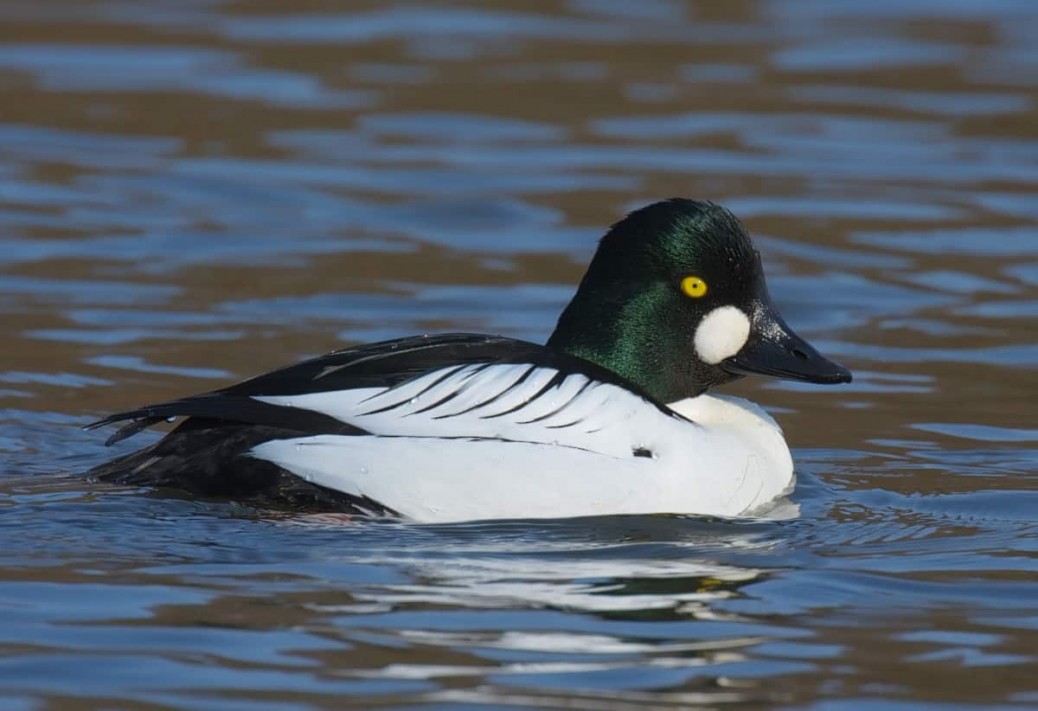Common Goldeneye, (Bucephala clangula) by Kim Ehn
Coming from the boreal forests of Canada and Alaska where they nest in tree cavities, the Common Goldeneye is observed during the winter on many waters throughout our state. They migrate south as early as November and some linger into early April. Feeding on crustaceans, mollusks, fish and insect larvae, they capture prey on the lake bottom or on submerged vegetation. While they are named for the bright yellow iris of the adults, their eyes are actually grey-brown at hatching. The males have a white circular patch on its face, a green-black head, black back, and white on the sides. Females wear the camouflage colors of gray with a brown head.
Second-year females will pair with a male while on the wintering grounds and they stay together until nesting starts. Females leave their fledglings after 5-6 weeks. Look for the Male Common Goldeneye to perform a complex series of courtship displays such as bending his head back towards his rump, then forward while kicking up water with his feet.
This diving duck has a streamlined body that enables it to fly as fast as 40 mph. When there’s no wind and it’s quiet, you can hear their wing beats produce a high-pitched metallic whistling sound. A flock flying nearby can be quite loud and noisy. A nickname in old bird guides was “The Whistler”.
To suggest a future Bird of the Month Species or comment, contact this author at [email protected]











